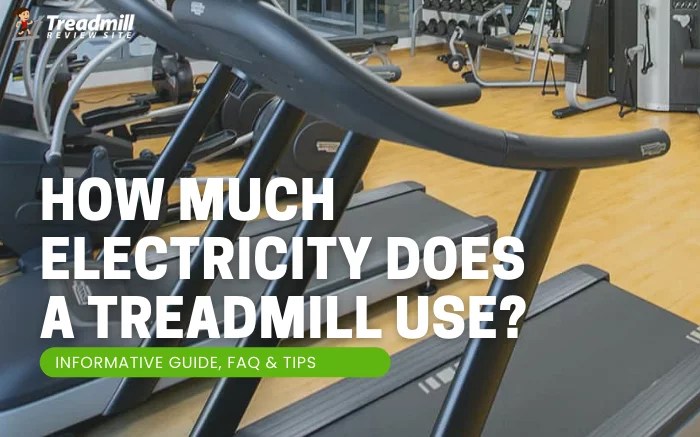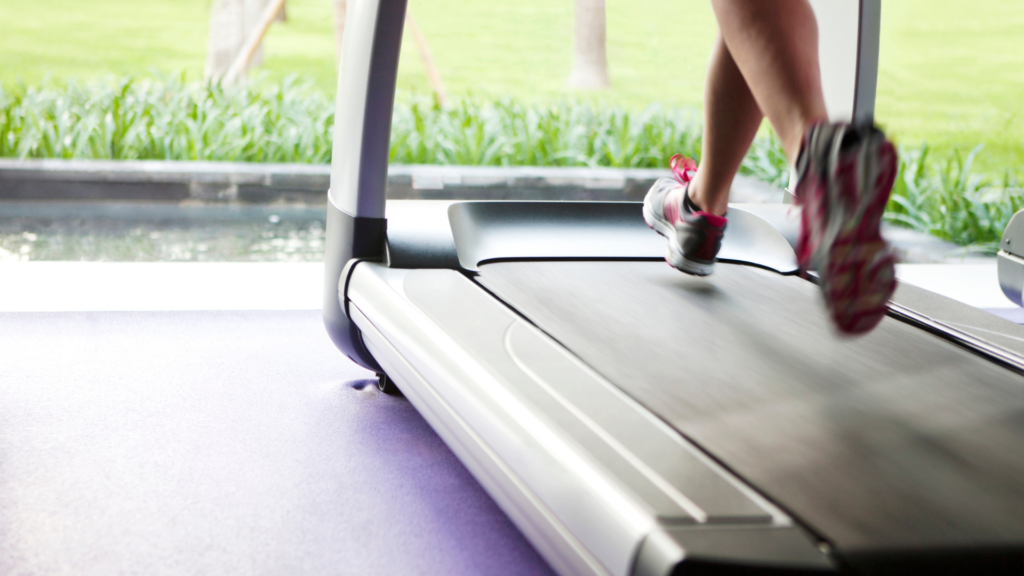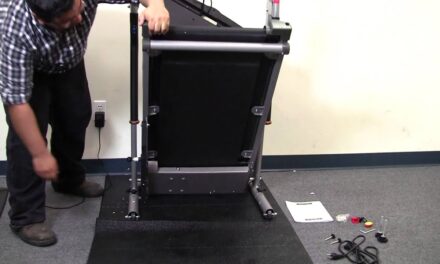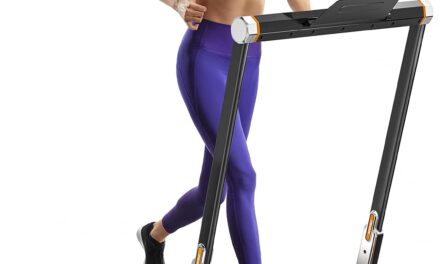Treadmills have become a popular fitness equipment choice for many people in the UK. But have you ever wondered just how much electricity a treadmill consumes per hour? In this article, we will explore this exact question and provide you with the information you need to know. Whether you’re concerned about the impact on your energy bill or simply curious about the environmental footprint of your fitness routine, we’ve got you covered. Stay tuned to discover the power consumption of treadmills and gain a better understanding of their electricity usage in the UK.
How much electricity does a treadmill use?
Treadmills are a popular piece of exercise equipment, widely used in homes and gyms. When using a treadmill regularly, it’s important to understand its power consumption and the associated electricity costs. In this article, we will delve into the factors affecting treadmill power usage, ways to measure electricity consumption, and tips to reduce electricity usage. Additionally, we will explore the concept of energy efficiency in treadmills and alternative power sources. By the end, you will have a comprehensive understanding of treadmill power consumption and be equipped with knowledge to make informed decisions about your workout routine.
Understanding treadmill power consumption
Before diving into the specifics of electricity usage, it’s important to grasp the basics of treadmill power consumption. When you use a treadmill, its motor drives the belt, and this requires electricity to function. The amount of electricity consumed depends on several factors, including the model and type of treadmill, speed settings, incline adjustments, and the duration of your workouts. By understanding these factors, you can gain insights into how much electricity your treadmill uses and make informed decisions about its usage.
Factors affecting electricity usage
Several factors influence the amount of electricity a treadmill consumes. One crucial factor is the speed at which you run or walk on the treadmill. Higher speeds require more power to drive the treadmill belt. Another factor is the incline setting. Running or walking uphill requires more electricity compared to a flat surface. Additionally, the duration of your workout plays a role in determining electricity usage. Longer workouts naturally consume more electricity. It’s important to consider these factors and make adjustments to optimize electricity usage without compromising your workout experience.
Measuring treadmill power consumption
To understand the electricity consumption of your treadmill accurately, it’s essential to know how to measure it. One way to measure power consumption is by referring to the manufacturer’s specifications for your specific treadmill model. Manufacturers often provide information about the wattage or power rating of the treadmill, which gives you an idea of its energy usage. Another method is to use a power meter or wattmeter. These devices can plug into the treadmill and measure the actual power consumption during your workouts. This real-time measurement can provide a more precise understanding of the electricity usage.
Electricity rates in the UK
Now that we have a good understanding of treadmill power consumption, it’s important to consider the electricity rates in the UK. Knowing the costs associated with running your treadmill is crucial for budgeting and determining the overall cost-effectiveness of using a treadmill.
Overview of electricity rates
Electricity rates in the UK can vary depending on various factors such as location, energy supplier, and type of tariff you have. On average, the cost of electricity in the UK is around 14-18 pence per kilowatt-hour (kWh). However, it’s important to note that these rates can change over time due to market fluctuations and other factors. It’s always a good idea to check with your energy supplier or consult your electricity bill for the most up-to-date information regarding the rates in your area.
Variations in electricity rates
It’s worth mentioning that electricity rates can also vary based on the time of day. Some energy suppliers offer different tariffs, such as peak and off-peak rates. Peak rates generally apply during the daytime when energy demand is higher, while off-peak rates are usually lower during nighttime and weekends. By understanding these variations, you can potentially plan your treadmill workouts during off-peak hours to take advantage of lower electricity rates.
Calculating electricity costs
To calculate the electricity costs associated with using your treadmill, you need to consider both the power consumption of the treadmill and the electricity rates. Let’s say your treadmill has a power rating of 1,000 watts (1 kilowatt or 1 kW) and you use it for an hour. If the electricity rate in your area is 15 pence per kilowatt-hour, the cost for that hour of running the treadmill would be approximately 15 pence. By multiplying the power consumption by the duration of your workout and the electricity rate, you can estimate the monthly or yearly costs of using your treadmill.

This image is property of i3.wp.com.
Average treadmill power consumption
Understanding the average power consumption of treadmills can help you gauge the expected electricity usage and costs. While it’s important to note that power consumption can vary among different treadmill models, we can still gain some insights into the average values.
Manufacturer specifications
One way to determine the average power consumption of treadmills is by looking at the manufacturer’s specifications. Manufacturers often provide information about the wattage or power rating of their treadmills. By comparing various models, you can get an idea of the power consumption range. It’s important to remember that these values are estimates and may not precisely reflect the actual electricity usage during your workouts.
Types of treadmills and their energy usage
The type of treadmill you own can also impact the average power consumption. There are generally two types of treadmills: manual and motorized. Manual treadmills, which rely on your own movement to drive the belt, typically consume less electricity since they don’t have a motor. On the other hand, motorized treadmills, which have an electric motor to drive the belt, consume more electricity. Within motorized treadmills, there can be variations in power consumption depending on the motor size, efficiency, and overall design of the treadmill.
Power-saving features on treadmills
Many modern treadmills come equipped with power-saving features that help reduce energy consumption. These features are designed to optimize electricity usage without compromising the functionality or user experience. Some power-saving features include auto-shutdown after a period of inactivity, energy-efficient motors, and sleep mode options. If you are concerned about the electricity usage of your treadmill, considering a model with power-saving features could be a viable option.
Determining treadmill power usage per hour
To accurately determine the power usage of your treadmill per hour, it’s important to consider the wattage of different treadmill models and calculate the energy consumption.
Wattage of different treadmill models
As mentioned earlier, manufacturers often provide information about the wattage or power rating of their treadmills. This wattage represents the maximum power the treadmill can use. By comparing the wattage of different treadmill models, you can get an idea of their energy consumption potential. It’s important to note that the actual power usage during your workouts may be lower than the maximum wattage, as it depends on factors such as speed, incline, and user weight.
Calculating energy consumption
To calculate the energy consumption of your treadmill per hour, you need to multiply the wattage by the duration of your workout. For example, if your treadmill has a power rating of 1,000 watts (1 kW), and you use it for 1 hour, the energy consumption would be 1 kilowatt-hour (1 kWh). This calculation can help you estimate the electricity usage of your treadmill and enable you to make informed decisions regarding its usage.
Using a power meter for accurate measurement
To achieve a more accurate measurement of the power usage of your treadmill, you can consider using a power meter or wattmeter. These devices can be plugged into the treadmill and measure the actual power consumption during your workouts. By using a power meter, you can get real-time data and have a more precise understanding of the electricity usage. This information can be valuable when estimating electricity costs and evaluating the efficiency of your treadmill.

This image is property of thriftychap.com.
Tips to reduce treadmill electricity usage
While the power consumption of your treadmill is primarily determined by its design and usage factors, there are some tips you can follow to reduce electricity usage without compromising your workout experience.
Adjusting speed and incline
One way to reduce electricity usage is by adjusting the speed and incline settings of your treadmill. Running or walking at lower speeds generally requires less power compared to high speeds. Similarly, reducing the incline or running on a flat surface can help minimize electricity consumption. By finding the optimal settings for your workout intensity and goals, you can save energy and reduce electricity costs.
Utilizing preset workout programs
Many treadmills come with preset workout programs that automatically adjust the speed and incline settings. These programs are designed to provide efficient and effective workouts while optimizing energy usage. By utilizing these preset programs, you can take advantage of their energy-saving features and ensure a well-rounded workout experience.
Maintenance and lubrication
Proper maintenance and lubrication of your treadmill can also contribute to reducing electricity usage. Regularly inspecting and cleaning the treadmill’s components, including the motor and belt, ensures smooth and efficient operation. Lubrication of the belt reduces friction, which in turn reduces the power needed to drive the treadmill. By following the manufacturer’s guidelines for maintenance and lubrication, you can prolong the lifespan of your treadmill and optimize energy efficiency.
Comparing treadmill energy efficiency
When considering the power consumption of treadmills, it’s important to examine their energy efficiency. Energy-efficient treadmills not only help reduce electricity costs but also have a positive impact on the environment.
Energy Star certified treadmills
The Energy Star certification is a reliable indicator of energy efficiency in various appliances, including treadmills. Energy Star certified treadmills meet specific requirements for energy efficiency set by the Environmental Protection Agency (EPA) and the Department of Energy (DOE). By choosing an Energy Star certified treadmill, you can be confident that the equipment has undergone rigorous testing and meets stringent energy efficiency standards.
Comparing energy consumption of different models
When comparing different treadmill models, it’s essential to consider their energy consumption. Look for treadmills that provide detailed information about their power usage, such as wattage or energy efficiency ratings. By comparing these values among different models, you can make an informed decision about which treadmill is more energy-efficient. It’s worth noting that energy-efficient treadmills may have a higher initial cost but can result in long-term savings on electricity bills.
Choosing a treadmill with lower power usage
Ultimately, choosing a treadmill with lower power usage can significantly impact your electricity costs. By considering the factors discussed earlier, such as wattage, power-saving features, and energy efficiency ratings, you can make a well-informed choice. It’s important to find a balance between your fitness needs, budget constraints, and environmental considerations to select a treadmill that suits your requirements while minimizing electricity usage.

This image is property of thriftychap.com.
Savings and costs of using a treadmill
When evaluating the costs and savings associated with using a treadmill, it’s essential to consider both the electricity costs and the potential benefits it brings to your health and fitness journey.
Estimating monthly electricity costs
To estimate the monthly electricity costs of using a treadmill, you can multiply the power consumption per hour by the number of hours you plan to use the treadmill each month. Using the electricity rate in your area, you can calculate the approximate cost. It’s worth noting that these costs may vary each month based on your usage patterns and electricity rates.
Is it cost-effective to use a treadmill?
Determining whether using a treadmill is cost-effective depends on various factors, including your electricity rates, frequency of usage, and your fitness goals. While there are electricity costs associated with running a treadmill, it’s crucial to consider the potential savings compared to other fitness options. If you prefer working out at home and use a treadmill regularly, the convenience and flexibility it offers may outweigh the electricity costs. Additionally, being aware of energy-saving tips and using an energy-efficient treadmill can minimize costs and make using a treadmill more cost-effective in the long run.
Balancing environmental impact and convenience
Apart from costs, it’s also important to consider the environmental impact of using a treadmill. Treadmills that consume less electricity contribute to reducing overall energy consumption and the associated carbon footprint. By choosing an energy-efficient treadmill, you can minimize your environmental impact while enjoying the convenience and health benefits of exercising indoors. It’s a balancing act between personal preferences, environmental considerations, and budget constraints.
Alternative power sources for treadmills
As technology advances, alternative power sources are emerging as viable options for powering treadmills. These alternatives provide sustainability and reduce dependence on conventional electricity sources.
Solar-powered treadmills
Solar-powered treadmills harness energy from the sun using solar panels, converting it into electrical energy to drive the treadmill. These treadmills can be a great option if you have access to ample sunlight and are looking to reduce your reliance on traditional electricity sources. Solar-powered treadmills not only save on electricity costs but also have a positive environmental impact by reducing emissions.
Battery-powered treadmills
Battery-powered treadmills operate using rechargeable batteries instead of relying solely on grid electricity. These batteries can be charged using conventional power sources or renewable energy, giving users the flexibility to choose the most convenient and sustainable method. Battery-powered treadmills can provide a portable and cordless workout experience, allowing you to place the treadmill in any location without the need for a nearby power outlet.
Connecting treadmills to renewable energy sources
Another option to power treadmills sustainably is by connecting them to renewable energy sources. If you have access to renewable energy, such as wind or solar power, you can connect your treadmill to these sources to minimize reliance on conventional electricity. By directly utilizing renewable energy, you can reduce carbon emissions, contribute to a greener environment, and potentially lower electricity costs.

This image is property of thriftychap.com.
Tips for energy-efficient treadmill workouts
To further optimize energy usage during your treadmill workouts, here are some tips for energy-efficient exercising.
Interval training
Interval training involves alternating between high-intensity bursts and recovery periods. By incorporating interval training into your treadmill workouts, you can achieve effective workouts in less time. This approach can reduce the overall duration of your workouts, thereby decreasing electricity consumption.
Using incline variations
Utilizing incline variations during your workouts not only challenges different muscle groups but also helps save energy. By intermittently adding incline settings to simulate hilly terrains, you can decrease the overall electricity consumption while still achieving an intense workout.
Combining treadmill exercises with other equipment
Incorporating other exercise equipment or activities into your treadmill workout can help diversify your routine and minimize electricity usage. For example, you can incorporate strength training exercises using dumbbells or resistance bands during brisk walking sessions on the treadmill. By adding variety and reducing the sole reliance on the treadmill, you can conserve electricity and create a well-rounded workout experience.
Conclusion
Understanding the electricity consumption of treadmills is essential for optimizing usage, managing costs, and minimizing environmental impact. By considering factors such as treadmill power consumption, electricity rates, and energy-saving tips, you can make informed decisions about your workout routine. Whether it’s adjusting speed and incline, choosing an energy-efficient treadmill, or exploring alternative power sources, you have the ability to balance convenience, financial considerations, and sustainability. With this knowledge, you can create a rewarding and efficient treadmill workout experience while being mindful of your electricity usage.





